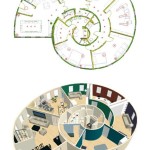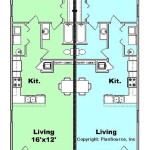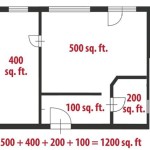How to Find Out the Floor Plan of a House
Obtaining the floor plan of a house can be essential for various reasons, ranging from planning renovations and redesigning interiors to assessing property value or simply understanding the layout of a potential purchase. While accessing these plans can sometimes be straightforward, other times requires a more investigative approach. This article will explore various methods and strategies for uncovering the floor plan of a house, providing a comprehensive guide for homeowners, prospective buyers, and real estate professionals.
Checking Existing Documentation
The first and most obvious place to look for floor plans is within existing documentation related to the property. This often proves to be the easiest and quickest method, as the plans are conveniently already available. Consider these sources:
Original House Plans: Builders frequently provide original blueprints to homeowners upon completion of construction. If the house is relatively new or if previous owners were diligent record-keepers, these plans might be stored in a safe place. Check areas like attics, basements, storage rooms, or filing cabinets for a rolled-up set of blueprints or a folder containing construction documents. These plans are the most accurate and comprehensive source of information.
Mortgage Documents: Some mortgage companies require a copy of the floor plan as part of the loan application process. Review your mortgage documents or contact the lender to inquire if they have a copy of the floor plan on file. This is particularly relevant for properties with substantial square footage or unique architectural features.
Homeowner's Insurance Policy: Similar to mortgage companies, homeowner's insurance providers may also request a copy of the floor plan to assess the potential risks and establish the replacement value of the property. Contact your insurance company or review your policy documents for any attached floor plans.
Previous Sales Listings: If the house has been sold recently, online real estate listings might include a floor plan. Websites like Zillow, Redfin, and Realtor.com often feature virtual tours and floor plans, especially for newer listings. Even if the house was sold years ago, archived listings might still be accessible. Perform a web search using the property address to locate any previous sales listings that might contain the desired information.
Closing Documents: During the closing process of a real estate transaction, various documents are exchanged, and among them may be a copy of the floor plan. Review the closing documents, which are typically stored securely by the homeowner, to see if a floor plan is included. Title companies involved in the transaction may also retain copies of these documents and could be contacted for assistance.
Contacting Local Authorities and Professionals
If the initial search of existing documentation proves unsuccessful, the next step involves contacting local authorities and professionals who may have access to floor plans or related information. This requires some research and persistence, but it can often yield positive results.
Local Building Department: City or county building departments are responsible for issuing building permits and maintaining records of construction projects. They often have copies of approved building plans, including floor plans, for properties within their jurisdiction. Contact the local building department and inquire about accessing the floor plan for a specific property. Be prepared to provide the property address and potentially pay a fee for retrieving the documents. Access to these records may be subject to local regulations regarding privacy and data protection.
Assessor's Office: The assessor's office is responsible for determining the property's assessed value for tax purposes. While they may not have detailed floor plans, they often have sketches or diagrams of the building's footprint, which can provide a general idea of the layout and dimensions. This information is typically publicly available and can be accessed online or in person at the assessor's office.
Architects and Builders: If the house was designed or built by a specific architect or builder, contacting them directly can be a fruitful approach. They may have copies of the original plans or be able to provide information about the house's design and construction. This is particularly useful for custom-built homes or properties with unique architectural features. Search for local architectural firms or construction companies and inquire whether they have any records related to the property.
Real Estate Agents: Local real estate agents who have experience selling properties in the area may have access to floor plans from previous listings or have contacts within the industry who can assist in obtaining the desired information. Contact local real estate agencies and inquire whether they have any records or resources that could help you find the floor plan.
Creating a Floor Plan Yourself
When all other avenues have been exhausted, the most reliable way to obtain a floor plan is to create one yourself. While this requires some effort and attention to detail, it ensures an accurate and up-to-date representation of the house's layout. Several methods can be used to create a floor plan, ranging from traditional manual measurements to digital tools and professional services.
Manual Measurement and Sketching: This method involves measuring the dimensions of each room and drawing a scaled representation of the floor plan on paper. Use a measuring tape to accurately measure the length and width of each room, as well as the dimensions of walls, doors, and windows. Create a rough sketch of the layout and then transfer the measurements to a scaled drawing. Use architectural symbols to represent doors, windows, and other features. This method is cost-effective but requires careful attention to detail and accuracy.
Digital Floor Plan Software: Several software programs are available that allow users to create digital floor plans. These programs typically offer a user-friendly interface and a range of features, such as pre-designed symbols, drag-and-drop functionality, and automatic dimensioning. Some popular options include SketchUp, AutoCAD, and RoomSketcher. These programs often allow for creating 3D models of the house, providing a more comprehensive visualization of the space.
Laser Measurement Tools: Laser distance measurers can significantly improve the accuracy and efficiency of manual measurements. These tools use laser technology to measure distances quickly and accurately, eliminating the need for manual tape measurements. They can also be used to calculate area and volume, making it easier to create accurate floor plans. The data can then be transferred to a digital floor plan software for further refinement.
Professional Floor Plan Services: If creating a floor plan yourself seems daunting, consider hiring a professional floor plan service. These services typically use laser measurement tools and specialized software to create accurate and detailed floor plans. They can also provide 3D models and virtual tours of the property. While this option is more expensive, it ensures a high level of accuracy and professionalism.
Using Mobile Apps: Several mobile apps are available that can assist in creating floor plans using the camera and sensors on a smartphone or tablet. These apps typically use augmented reality (AR) technology to measure distances and create a 3D model of the space. While the accuracy of these apps may vary depending on the device and the environment, they can provide a quick and convenient way to create a basic floor plan. Some popular options include Magicplan, RoomScan Pro, and Floor Plan Creator.
When creating a floor plan, regardless of the method used, consider the following tips to ensure accuracy and completeness:
Measure Everything: Measure all rooms, hallways, closets, and other spaces. Include the dimensions of walls, doors, windows, and any built-in features.
Be Precise: Use accurate measuring tools and techniques to ensure precise measurements. Double-check all measurements to minimize errors.
Include Details: Note the location of electrical outlets, light fixtures, plumbing fixtures, and other important details.
Draw to Scale: Use a consistent scale to represent the dimensions of the house accurately. A common scale is 1/4 inch = 1 foot.
Label Everything: Label each room and feature clearly and accurately.
Update Regularly: If the house undergoes any renovations or modifications, update the floor plan accordingly.
By combining these strategies, individuals can significantly increase their chances of successfully finding or creating an accurate floor plan of a house. This document is invaluable for various purposes, from simple home improvement projects to complex real estate transactions.

10 Ways To Find The Floor Plan Of A House

How To Properly Read Floor Plans And What Details Look For

10 Ways To Find The Floor Plan Of A House

9 Ways To Find Floor Plans Of An Existing House Archid

How To Read A Floor Plan With Dimensions Houseplans Blog Com

How To Read A Floor Plan With Dimensions Houseplans Blog Com

How To Find Floor Plans Blue Prints Of Your House

9 Ways To Find Floor Plans Of An Existing House Archid

How To Measure Calculate Square Footage Roomsketcher

How To Calculate Floor Area Using 4 Easy Methods
Related Posts








